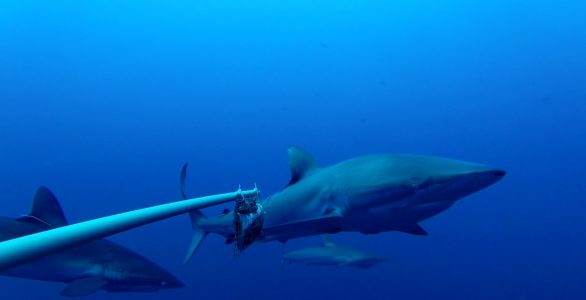Baited Remote Underwater Videos
2022, August
In the last years, BRUVs (Baited Remote Underwater Videos) was implemented in the monitoring program in Saint Paul’s Archipelago especially to explore mesophotic reefs but also to estimate the abundance of big top predators, including pelagic fishes and wary sharks. Since 2017 longline fisheries had been banned from the region, and very recently sharks started to recolonize the waters around the islets. Pelagic BRUVs with bags of stink sardines is used to attract and estimate the abundance of sharks in and around the Archipelago. The most abundant sharks being detected are the Silky Shark (Carcharhinus falciformis), with few sights of the Galapagos Shark (C. galapagensis). This last one was considered locally extinct due to more than 40 years of longline activity (Luiz & Edwards, 2011). In the past, sharks were a common component of many marine environments but we lost the baseline as having them as a top predators in the food chains in reefs worldwide. Old reports of Saint Paul’s Archipelago claimed that the waters around were fully populated by sharks, which made fishing by hook and line almost impossible. The prohibition of longline was a successful conservation initiative towards pristineness and in the long term it will be possible to understand community changes in the local food web as sharks became again the biggest top predators.

